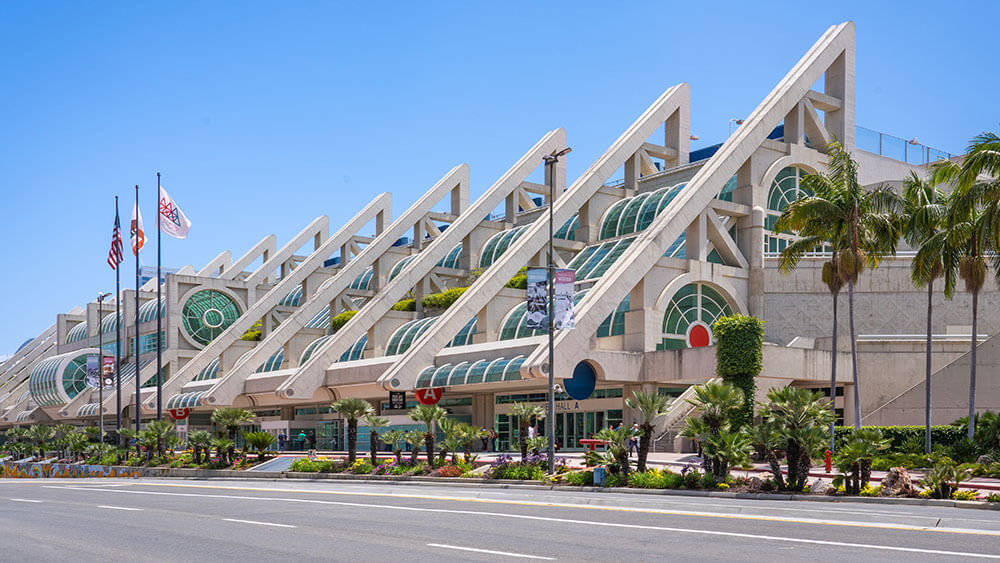
Operators of convention venues like the San Diego Convention Center are eager to welcome events — and their attendees — once again.
As event organizers adapted to a digital-only, COVID-19 world this spring, their destination, hotel, and venue partners have been forced to confront the challenges of a worst-case scenario: zero business. The convention and trade-show industry is accustomed to posting impressive economic impact statistics for cities around the world, but 2020 may bring a 180. In May, Tourism Economics reported doomsday figures for travel in North America: 107 million fewer domestic visitors, 42 million fewer international visitors will travel to North American cities this year, and a total economic loss of $1.2 trillion in economic output.
Leisure travel will return sooner — positive signals from summer vacation travel offer a glimmer of hope — but it’s clear that meetings and events will take longer to return. While those cities and their convention centers have seen few out-of-town visitors, their leaders have been busier than ever as they work with event planners to sort out cancellation policies, secure alternate dates for postponed conferences, and look ahead to determine the long-term business implications of the a pause on events. Convene reached out to destinations on both U.S. coasts and in Texas to get a sense of how they have worked with clients through the pandemic and what they expect for the future of the face-to-face industry.
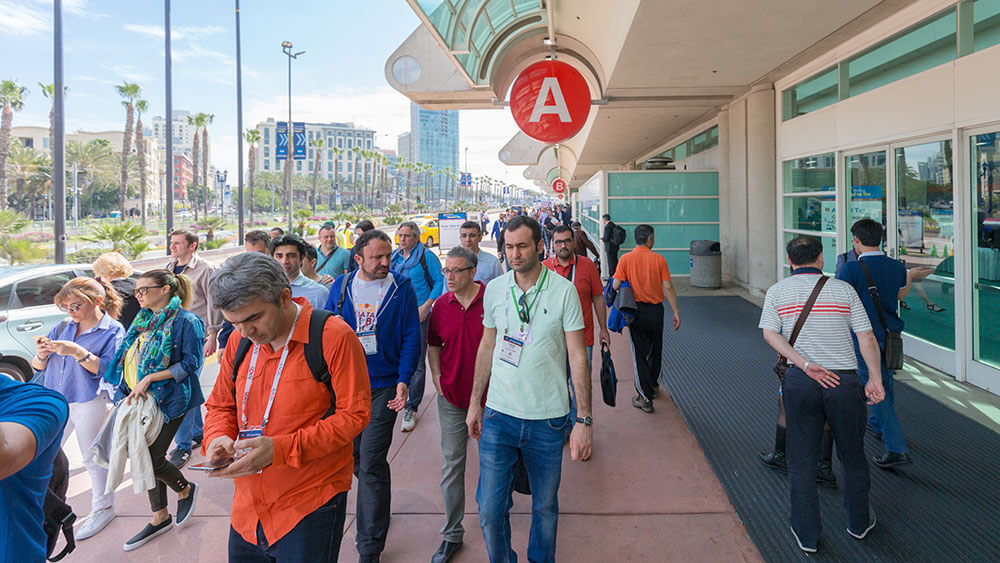
DMOs face a challenge of figuring out when attendees will be comfortable enough to be part of a large group, said Julie Coker CEO of the San Diego Tourism Authority. (Courtesy San Diego Convention Center)
San Diego: Listening and Looking Ahead
With most of the U.S. on lockdown and not leaving their homes, Julie Coker set off from Philadelphia to a new home across the country to start her role as president and CEO of the San Diego Tourism Authority, bringing with her a philosophy that resonates with customers no matter where they are doing business. “We have to listen to hear instead of listening to respond,” Coker told Convene. “The most important piece has been making sure we understand the objective of each customer.”
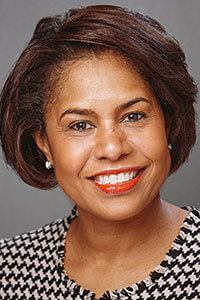
Julie Coker
Some of those customers have been looking for assistance with securing alternative dates, and others have been searching for guidance on how to educate their leadership on next steps for mass gatherings. While objectives have varied, customers all share the same feelings of anxiety and uncertainty.
“We all want to make sure that we are listening to the fears,” Rip Rippetoe, president and CEO, San Diego Convention Center Corporation and the incoming chair of the International Association of Venue Managers, told Convene. “So, we are asking our customers how they would like to see us proceed. We want to be able to develop reopening plans and guidelines that are actually going to assist us and assist our industry. We’re doing a lot to reach out to find out what is important — not just thinking about doing the kind of infection control we need — but how granular we need to get when it comes to sanitation and cleaning. The conversation also includes our labor unions. We’re tapping into everyone we can to look at the big picture.”
The big picture also includes some big questions: Who is going to come to conferences and trade shows and when? Finding the answers is going to be difficult, according to Coker. Part of the challenge involves external factors such as travel bans and corporate insurance policies that cover international attendees should they become ill while traveling. The more challenging piece of the puzzle is gauging attendees’ comfort level with traveling and being part of a large group.
“There are going to be some attendees who are not comfortable until there is a vaccine,” Coker said.
In addition to challenges around forecasting attendance numbers, Coker pointed out that the financial fallout from the pandemic will create headwinds for revenue to support the program. “We’re going to see merging of companies, which will impact exhibitions,” she said. “That was already happening, and it’s going to continue due to the loss of revenue that some companies have experienced. Sponsorship dollars will also be affected. For meeting planners to put their arms around all these factors and translate them to their room blocks will require a lot of coordination with our sales team.”
Coker said that it’s important to understand the losses that cities and city governments have experienced. “There are many convention centers that are wholly funded through the hotel tax or the city sales tax,” she said. “You’re going to see some really tough decisions in some destinations. How are they going to make the debt service payment on the convention center? That will have a trickle-down impact on the meeting planner community.
“There are no winners in this pandemic,” Coker added. “Whether a hotel or a convention center was able to secure cancellation money or a group received insurance funds, that’s still not a win. There are far greater benefits for us to meet face-to-face.”

Rip Rippetoe
Both Rippetoe and Coker have developed three budget forecasts for their fiscal year, which began on July 1. While the forecasts include lower business projections, there are new expenses on the horizon to make sure that environments are safe.
“One of the pieces that will be really important for the future is an understanding of everyone’s responsibilities,” Rippetoe said. “Whose responsibility is this particular component that is part of reopening? For instance, cleaning and disinfecting rooms and touch points is our responsibility as a venue. But providing supplemental hand sanitizer dispensers inside key points on the licensed spaced in exhibit halls and meeting rooms is an area shared by our meeting planners. Developing event-specific F&B plans is a responsibility of a meeting planner working with our F&B provider, Centerplate. Wearing face masks is everyone’s — including attendees’ — responsibility. Defining those responsibilities allows meeting planners to build their strategies for success for when we do reopen.”
Convention industry leaders are reframing the definition of success in the post-pandemic world. “Success is when we finally hold a face-to-face meeting,” Coker said. “It’s baby steps. Right now, we are looking forward to getting a group in the convention center.”
For Rippetoe, success gets back to a broader audience: making an impact in the community. “Under ordinary circumstances, we are an economic driver that creates jobs,” he said. “One of the indications of success is when we can bring those jobs back and create wages for the people who really need them.”
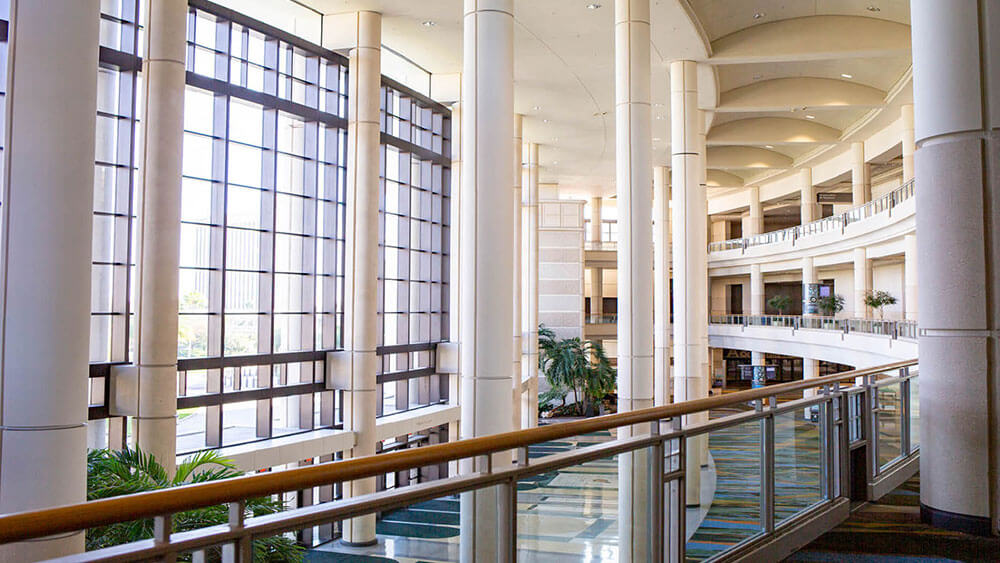
Mark Tester, executive director of the Orange County Convention Center (above) has participated in a daily conference call with Orange County Mayor Jerry L. Demings and other community leaders and partners since the pandemic began. (Courtesy OCCC)
Orlando: An Early Recovery and a Sense of Optimism From Corporate America
“Our destination has a history of working closely together in tough times,” George Aguel, president and CEO, Visit Orlando, told Convene. “From our community standpoint, the piece that helps us through this kind of very challenging time is our culture of collaboration. Everyone here understands the importance of the visitor. Whatever we’re doing, we’re doing it together.”

George Aguel
Mark Tester, who took over as executive director of the Orange County Convention Center in February, quickly recognized that spirit of collaboration. Since the beginning of the pandemic, he has been on a daily conference call with Orange County Mayor Jerry L. Demings and other community leaders and partners to contribute the voice of the convention and trade show industry to the city’s economic recovery efforts. In addition to talking to members of the community, Tester noted that the convention center has been focused on talking to customers. “We wanted our customers to receive the latest information from us, not read it in the papers or the trades,” Tester told Convene. “We’ve done a series of communication pieces to make sure they are in the loop.”
One piece of that messaging was the convention center’s early adoption of the Global Biorisk Advisory Council’s (GBAC) GBAC’s STAR accreditation program, which signifies a venue’s ability to maintain the highest standards of sanitation and infectious-disease-prevention protocols.
“We want to be up to date with all the new products and services,” Tester said. “I’ve had a number of different conversations with temperature-taking equipment suppliers, and we are looking at what else is possible. I think the potential for rapid COVID testing for conventions may not be that far off. The cost of it initially looked astronomical, but I’m already hearing numbers that seem more reasonable.”
Additionally, Aguel said that the city is in discussions with a local health-care system to develop customized medical plans for each group that comes to Orlando. “They will be involved in pre-event planning and offer a presence on-site during the experience,” he said. “We were looking for an additional layer of protection for everyone.”
Participants of the AAU Volleyball National Championships will see that enhanced level of safety at the convention center in mid-July. With no spectators allowed, no opening ceremony, temperature checks before games, and a range of other extra precautions, the event will feel much different than a typical youth sports gathering, but it’s a signal of Orlando’s readiness to host attendees again. The city will be home to the return of professional sports, too, with the National Basketball Association and Major League Soccer both bringing teams to Orlando to compete in a bubble format for the remainder of their seasons.
Those events make Aguel optimistic for the future. While he described the upcoming season as “not an average fall in Orlando,” he said that 2021 looks like “a normal, strong Orlando convention calendar.”
Part of that calendar is packed with business that was forced to postpone this year. Cramming two years of groups in one is no easy task, but Tester highlighted that there is an unprecedented level of flexibility to match the unprecedented times. “Normally, talking about flexibility for a convention within 12 months would be very difficult,” he said. “But so much has changed. People are willing to consider moving dates or releasing unused space.”

Mark Tester
In addition to feeling positive about business in 2021, both Aguel and Tester said that the lessons from the pandemic have strengthened the industry ecosystem. “Friendships have grown stronger than ever before,” Aguel said. “We’re all experiencing the same pain together. These rare moments, while they are very difficult, offer us a reminder to reflect on the fact that these long-standing relationships with clients and colleagues are the secret to success in this industry.”
“Everyone has come together,” Tester added. “We’re sharing information with other destinations, general service contractors, hotel companies, and customers. We all want to be successful. I’ve spoken to my counterparts in other destinations to share what we’re doing, what we’re thinking, how we’re handling cancelations, and how we’re budgeting for next year.”
In that budgeting process, Tester has found one hopeful sign for the business events industry’s return: corporate events. “The corporate events that have needed to cancel over the past few months have all rescheduled,” he said. “If corporate America did not see the value in getting their people together, they would be the first ones to cancel. Trade associations will continue to have their events to provide the funding for lobbying and provide education, but corporations do not have to have meetings. They do, though, because they know that people need to get together.”
Austin: Occupancy and a Big Focus on the Outdoors
As event organizers first started postponing face-to-face meetings to later this year, Visit Austin and the Austin Convention Center teams recognized the serious challenges that many groups faced from an attendance-building perspective.
“When you look from the customer’s point of view, you realize that most of them cannot market the conference on such a tightened time frame,” Steve Genovesi, executive director, Visit Austin, said. “We had groups that were planning to meet in the fall that needed to decide by June 1.”
Genovesi added that a hobby or corporate group can communicate in a shorter time frame than a professional association. “Everyone had different deadlines for their decision making.”
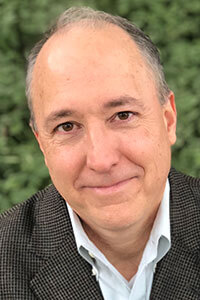
Steve Genovesi
Like every destination, event cancellations led to financial pain for Austin. Genovesi said that Visit Austin lost 263 meetings for 2020 with an estimated economic loss of $316 million. That figure does not include SXSW, which was canceled in March and represents $355 million of impact to the city. Still, while Austin is dealing with the financial fallout, the city has been working hard to give digital attendees a glimpse of what they can look forward to when they are able to come to the Texas capital. “For canceled events that have gone fully virtual, we are providing custom content such as live music, local chef demos, and barbeque tips from local masters,” he said. “Our goal is to bring Austin to its attendees in a unique way to enhance the virtual experience.”
Looking ahead, bringing those attendees physically to Austin is the overarching goal. Paul Barnes, deputy director and chief operations officer, Austin Convention Center, has been forecasting — and re-forecasting — to keep pace with the changes of the pandemic.
“As we have progressed and situations are starting to somewhat stabilize, we’ve worked hard to make sure that we have an idea of how the future looks,” Barnes said. “Both the convention center and Visit Austin operate on the hotel occupancy tax. That’s a large chunk of our budget. We have kind of written off, for practical purposes, mid-March through December 2020. Looking ahead, our food and beverage projections in the building are near 2010 levels. We’re hopeful for 2021 based on the strong level of business we have confirmed. The question is, will it remain, and will the attendance be as expected? …. We hope that the second half of 2021 will rally.”
The convention center will be empty for the foreseeable future, but Genovesi shared more-immediate efforts to fill hotel rooms in Austin. “Success is all about occupancy,” he said. “It means jobs. The higher hotels can drive their occupancy, the more they can bring back people to be employed. Occupancy is going to be a strong mantra. However, we can do it — whether it’s through business travel, leisure, conferences and meetings. We’re also focusing on some staycation promotions to encourage people who live in Austin to take advantage of the chance to stay in a hotel with a pool.”
While occupancy levels are low, some expenses are getting higher. “We are investing money in ultraviolet machines that will run through spaces and ionized sprayers,” Barnes said. “None of that is inexpensive. It’s a fine line that we have to walk, especially this year in trying to balance a budget with a dramatically reduced revenue. Fortunately, our convention center is unique in that we employ most of our staff versus outsourced. This allows for a high level of training, consistency, and preparedness.”

Paul Barnes
As Barnes and his staff work to update the interior of the convention center, he and Genovesi expect what’s outside the building — including the new Brush Square Park across from the convention center, slated to be completed in approximately 18 months — to play a key role in event experience design. “We have been developing some outside spaces for the last few years to keep up with SXSW and their campus-style design program,” Barnes said. “It’s enabled us to look at some of these spaces in different ways to spread out events.”
As Barnes identifies ways to spread out people at events, Genovesi pointed out that Austin’s track record of spreading out business among a range of organizations positions the city well for the recovery.
“As a convention destination, we enjoy an equal mix of corporate, association, state, and regional associations,” he said. “We believe Austin is still a fairly new convention destination for meetings with a positive buzz factor that can help market a conference. Another factor that makes us hopeful is that our overall economy is prominent in tech, state government, and the University of Texas at Austin. All those entities will hopefully provide a quicker return to business travel for our hotels and the airport.”
Yet as fast as they hope that the recovery will begin, officials in Austin also recognize the pain that every member of the business travel ecosystem has felt from COVID-19 — particularly nonprofit association clients. “How do you deliver next year’s annual meeting,” Barnes asked, “if you don’t have the revenue from this year’s?”
